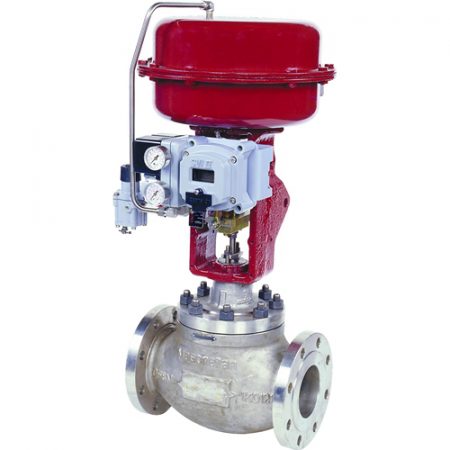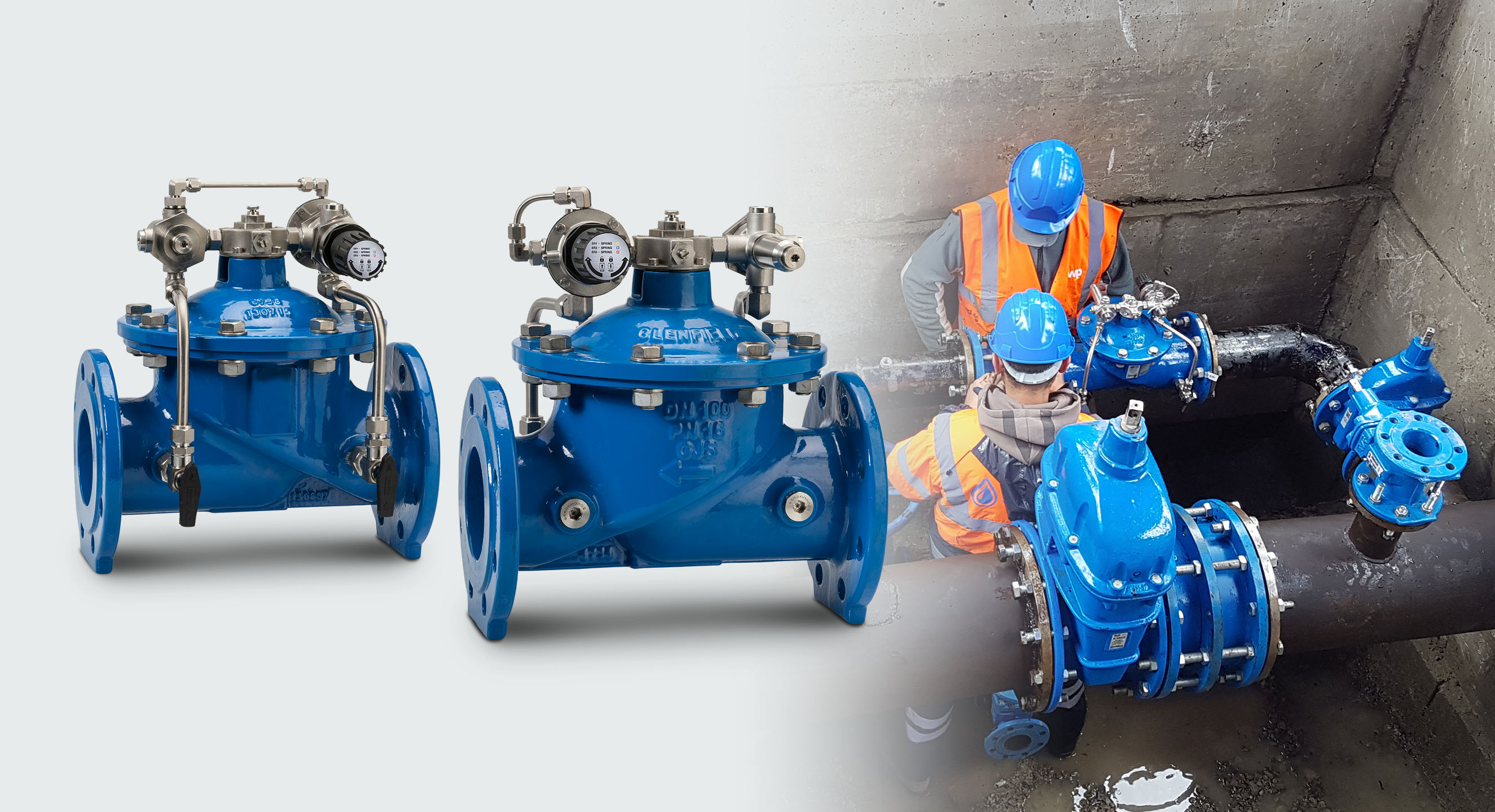Exploring the Capability of Modern Control Valves in Industrial Applications
Exploring the Capability of Modern Control Valves in Industrial Applications
Blog Article

Maximize Energy Financial Savings and Comfort With Advanced Structure Automation Controls
In the realm of contemporary style and facility monitoring, the integration of sophisticated building automation regulates stands as a pivotal innovation. The convergence of modern technology and sustainability has actually birthed a new era where power performance, convenience optimization, and operational streamlining are no more distant desires but attainable truths. By harnessing the power of automation, structures can adapt, react, and advance in means that were once unbelievable. The potential for substantial power cost savings and boosted comfort is not just an opportunity however a guarantee waiting to be satisfied. This standard change in building monitoring holds the vital to opening a world where ecological conscientiousness and resident health harmoniously exist together within the wall surfaces of our structures.
Power Effectiveness Benefits
Power effectiveness advantages can considerably decrease power intake and functional costs in buildings. Energy-efficient systems, such as advanced structure automation controls, can enhance the use of sources like illumination, air conditioning, and heating, leading to reduced power expenditures over time.
In addition, enhanced power efficiency can prolong the life expectancy of structure equipment and systems. By operating extra successfully, HVAC systems, lighting fixture, and other structure elements experience less deterioration, resulting in minimized maintenance and replacement costs. Furthermore, energy-efficient structures often regulate greater residential or commercial property worths and rental prices, offering lasting economic advantages to proprietors.
In addition, power performance can boost passenger comfort and performance. Correctly managed indoor atmospheres with ideal lights and thermal conditions create an even more enjoyable and favorable workspace, resulting in enhanced staff member fulfillment and performance. Generally, the power efficiency benefits related to sophisticated building automation controls are diverse, encompassing expense savings, environmental stewardship, and owner health.
Boosted Convenience Control
Enhancing comfort control in structure settings calls for a sophisticated integration of advanced automation systems for optimum owner wellness. By making use of advanced building automation controls, facilities can customize the interior environment to fulfill the particular demands and preferences of residents. These systems allow accurate law of temperature, ventilation, and lighting, producing a comfy and productive environment. Occupant contentment and efficiency are carefully linked to thermal convenience, making it vital to have systems in position that can adjust to changing conditions in real-time.
Boosted convenience control exceeds standard temperature changes. It consists of features such as individualized setups, occupancy sensing units, and all-natural light use to develop a dynamic and responsive environment. By incorporating these innovative controls, structures can not only boost convenience yet likewise enhance power efficiency by enhancing system operations based on actual occupancy and use patterns. Ultimately, prioritizing occupant convenience with advanced automation systems brings about an extra satisfying and much healthier interior atmosphere.
Operational Efficiency Improvements

Moreover, the execution of real-time tracking and analytics devices allows building operators to recognize energy inefficiencies and functional anomalies without delay. By continually monitoring power use patterns and system performance metrics, adjustments can be made in real-time to maximize power usage and guarantee peak operational effectiveness. control valves. Additionally, including need response strategies into building automation visit this site controls can better improve functional performance by dynamically readjusting power use based upon grid conditions and pricing signals
Indoor Climate Optimization
Efficient indoor climate optimization is a fundamental facet of building automation controls, ensuring residents' comfort and wellness while maximizing energy cost savings. By utilizing innovative sensors and controls, building automation systems can continually change and monitor temperature, humidity levels, air high quality, and ventilation to produce an optimum indoor atmosphere. Keeping constant and comfy conditions not only boosts passenger satisfaction but also increases productivity and general wellness.
Interior climate optimization also plays an essential role in power performance. By fine-tuning ventilation, cooling, and heating systems based on real-time information and occupancy patterns, developing automation controls can considerably reduce energy usage - control valves. Carrying out techniques such as demand-controlled air flow and thermal zoning can aid lessen power waste while making certain that each area of the building gets the essential conditioning.

Lasting Setting Development
Building automation controls not just optimize indoor environment problems for power performance and resident convenience however likewise lay the foundation for developing a sustainable environment through calculated administration of resources and systems. By integrating sophisticated building automation innovations, such as sensing units, actuators, and intelligent software application, centers can keep an eye on and change power usage in real-time to lessen waste and minimize their carbon footprint. These systems enable predictive maintenance, identifying potential problems prior to they rise and optimizing equipment performance to boost long life and effectiveness.
Furthermore, lasting setting development expands past check this site out energy administration to incorporate water preservation, waste decrease, and indoor air top quality improvement. Building automation controls can manage water use, detect leaks, and make certain appropriate garbage disposal techniques, adding to total sustainability efforts. Furthermore, by monitoring and controlling ventilation and filtration systems, these innovations boost passenger health and wellness and performance while decreasing energy usage associated with cooling and heating operations.
Verdict
To conclude, progressed structure automation regulates offer considerable benefits in regards to energy savings, convenience control, operational efficiency, indoor climate optimization, and developing a lasting setting. By carrying out these controls, buildings can attain ideal efficiency while lowering energy usage and boosting occupant convenience. It appears that making use of sophisticated automation innovation is important in improving structure efficiency and creating a much more lasting future.
Energy performance benefits can substantially lower energy intake and functional expenses in structures. Generally, the energy efficiency advantages linked with sophisticated structure automation controls are multifaceted, including cost savings, ecological stewardship, and resident health.
Additionally, integrating demand response methods right into building automation controls can additionally improve operational efficiency by dynamically changing power usage based on grid conditions and prices signals.
Structure automation regulates not just optimize indoor environment problems for energy performance and resident comfort but also lay the structure for creating a sustainable atmosphere via tactical monitoring of systems and resources.In final thought, advanced building automation regulates offer significant advantages in terms of power savings, comfort control, operational performance, indoor environment optimization, and creating a sustainable his explanation environment.
Report this page